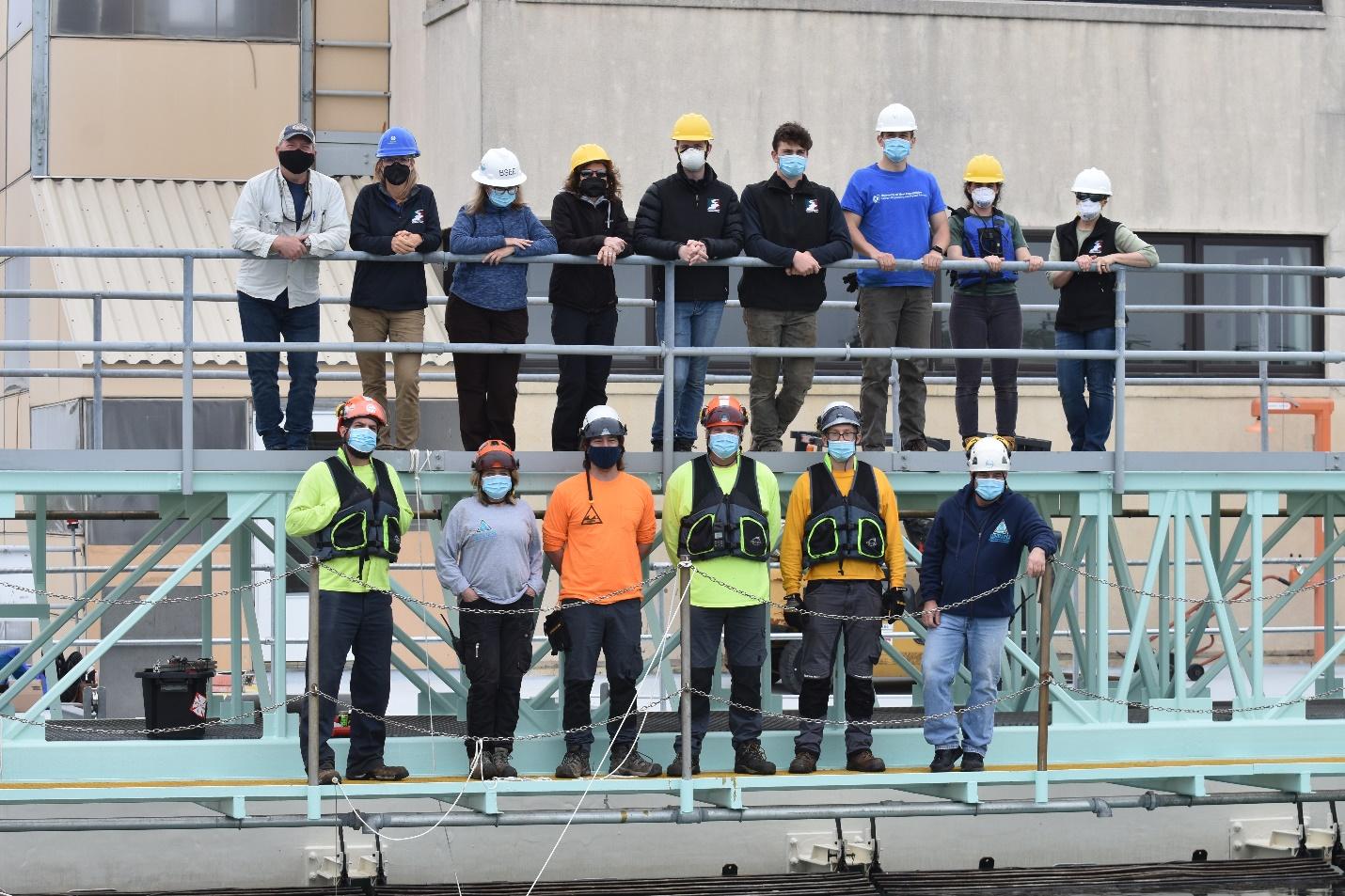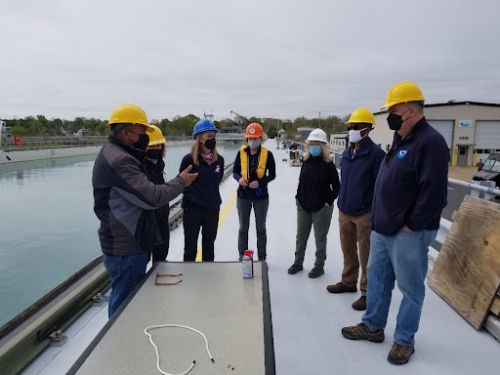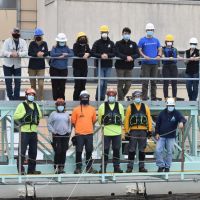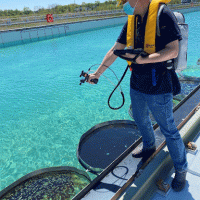Testing Oil Detection Technologies with a Collaborative Research Team
JUNE 6, 2022 — Last week, a collaborative research team led by NOAA’s Office of Response and Restoration conducted experiments at the Ohmsett test tank facility in Leonardo, New Jersey. These experiments were the first conducted at the tank since the completion of the multi-month facility refurbishment.
Oil spill researchers used remote sensing tools and sampling devices to advance our ability to ‘see’ and measure floating oil, to determine oil slick thickness, patchiness, and to calculate how much is on the surface of the water.
The team designed experiments to evaluate the capabilities of various technologies such as multispectral and thermal sensors, radiometers, light attenuation devices, ‘dip plates’, tube samplers and sorbent pads to characterize the oil. This information is used to help responders understand the particular strengths of different technologies based on the controlled test results.
The findings of these studies will be used to support spill response and assessment activities such as fate and transport modeling, exposure assessments, and oil volume estimates.
The multi-agency research team included the Coastal Response Research Center, students from the University of New Hampshire and scientists from the Bureau of Safety and Environmental Enforcement, the Environmental Protection Agency, and the United States Coast Guard.
For more information please contact lisa.dipinto@noaa.gov.
more images


 An official website of the United States government.
An official website of the United States government.



